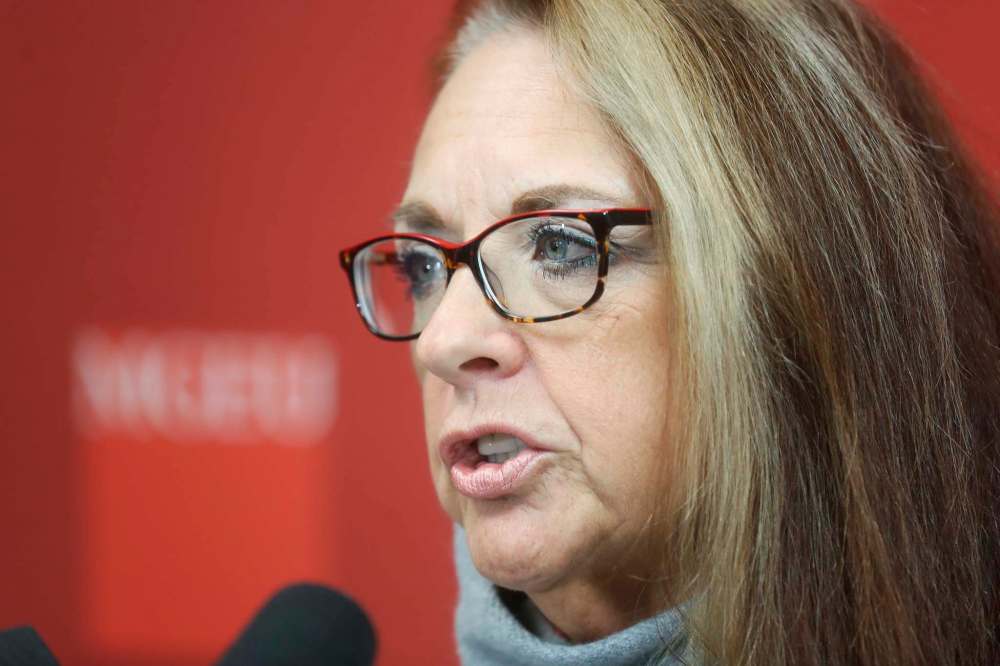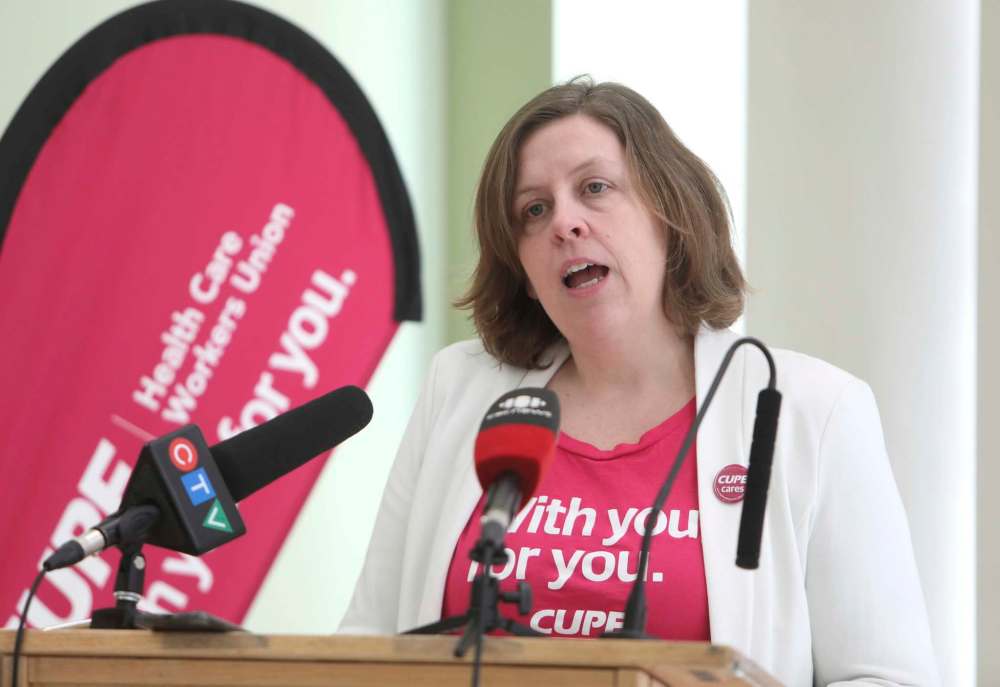Unions’ battle over turf hurts health care
Read this article for free:
or
Already have an account? Log in here »
To continue reading, please subscribe:
Monthly Digital Subscription
$0 for the first 4 weeks*
- Enjoy unlimited reading on winnipegfreepress.com
- Read the E-Edition, our digital replica newspaper
- Access News Break, our award-winning app
- Play interactive puzzles
*No charge for 4 weeks then price increases to the regular rate of $19.00 plus GST every four weeks. Offer available to new and qualified returning subscribers only. Cancel any time.
Monthly Digital Subscription
$4.75/week*
- Enjoy unlimited reading on winnipegfreepress.com
- Read the E-Edition, our digital replica newspaper
- Access News Break, our award-winning app
- Play interactive puzzles
*Billed as $19 plus GST every four weeks. Cancel any time.
To continue reading, please subscribe:
Add Free Press access to your Brandon Sun subscription for only an additional
$1 for the first 4 weeks*
*Your next subscription payment will increase by $1.00 and you will be charged $16.99 plus GST for four weeks. After four weeks, your payment will increase to $23.99 plus GST every four weeks.
Read unlimited articles for free today:
or
Already have an account? Log in here »
Hey there, time traveller!
This article was published 30/01/2019 (2507 days ago), so information in it may no longer be current.
When the Progressive Conservative government announced a plan to massively consolidate unionized bargaining groups in the health care system, it claimed the goal was to improve efficiency and patient care.
The fact that it has pitted some of the province’s largest public-sector unions against each other in gladiator-style combat is just a side benefit.
The Canadian Union of Public Employees has accused the Manitoba Government and General Employees’ Union of lying and fearmongering in a bid to win the support of health care workers in upcoming representation votes.

CUPE’s letter focused on the issue of whether the province, through the regional health authorities, will force home care workers and hospital aides, slated to become part of one bargaining unit, to change where they work on a whim to meet staffing shortages.
The MGEU believes the RHAs will force home care workers to swap with hospital aides, and vice versa; CUPE argued this is a red herring, and the MGEU is only bringing it up now to increase its profile prior to the representation votes.
The truth, of course, appears to be somewhere in between.
Health Minister Cameron Friesen denied that any health care worker would be forced to change jobs. “Staff will continue to have choice about where they work and what role they play in the system,” he said.
However, while reiterating Friesen’s comments, WRHA chief operating officer Lori Lamont said greater flexibility in moving workers with similar skills and training into areas where there is a staff shortage is one of the goals of consolidation.
The ability to shuffle workers appears to be on the table even if the rules under which an employee could be moved within a facility, between facilities or into a different job have yet to be determined. That process will be established when new bargaining agents sit down with the province and strike new contracts. Until then, the terms of existing contracts are in place.
What that really means is CUPE’s decision to go on the offensive with its rival union has less to do with employee mobility and more to do with a fight between unions to see who will represent health care workers.
Currently, there are more than 180 bargaining groups for medical professionals and health support workers in Manitoba, with 85 distinct agreements in Winnipeg alone. Consolidation will bring the provincial total down to 40, with seven contracts in Winnipeg.
The Tory government passed legislation that created seven employee categories under consolidation: nurses; physicians; medical residents; physician assistants and clinical assistants; professional/technical/paramedical; facility support; and community support. Workers in each group will be asked to vote for a single union to represent them.
Not all groups will be forced to vote. Physicians will continue to bargain under Doctors Manitoba and nurses will be covered by the Manitoba Nurses Union. However, workers in all other categories have a choice to make. That has pitted some of the province’s largest unions against each other in a battle for the right to represent tens of thousands of employees.
In the community support category, which will include home care workers and hospital health care aides, 7,100 employees will ultimately be grouped together for future contract talks. The MGEU represents about 4,000 of those employees, CUPE covers 1,800 and another 2,000 are represented by five other unions.
In facility support, which involves staff who do not have direct hands-on interaction with patients (maintenance, food services, laundry), there are more than 5,800 employees. The MGEU and CUPE both represent about 1,900 in this group, with the United Food and Commercial Workers covering another 1,200 and the remainder split between other unions.
History demonstrates just how contentious and painful these votes can be. In 2012 when the former NDP government reduced the number of regional health authorities to five from 11, votes were held to determine which union would represent each new region, with more than 8,000 workers involved.

When the smoke cleared, the MGEU was chosen to represent 5,800 of those employees, a net increase of about 5,000 members, most at the expense of CUPE.
Consolidation is a big deal, and it’s important that the process unfold smoothly and thoughtfully. The culture of the health care system, and the working lives of thousands of people, are at stake.
However, the decision by CUPE to take its fight with the MGEU public is a massive strategic miscalculation that is slowly eroding the credibility of public-sector unions with both government and taxpayers.
When he announced consolidation, Pallister strongly suggested it was necessary because all of the different contracts and unions made it impossible to reform the delivery of health care. CUPE’s public battle with the MGEU seems to confirm much of what the premier suggested was wrong with the state of health care.
In short, it makes public-sector unions appear as if they are less concerned about the quality of health care, and more concerned about protecting their membership numbers.
No union should be condemned for focusing on the best interests of its members. But in health care — the highest-profile and most expensive department in government — the interests of workers must always be balanced by the broader pursuit of a sustainable, quality system.
A public spat between public-sector unions is not just embarrassing, it will fundamentally undermine their bargaining power when it comes time to negotiate new contracts.
It will also continue to amuse the political masters of the health care system who, given their lack of affinity for organized labour, could not have asked for a better outcome.
dan.lett@freepress.mb.ca

Born and raised in and around Toronto, Dan Lett came to Winnipeg in 1986, less than a year out of journalism school with a lifelong dream to be a newspaper reporter.
Our newsroom depends on a growing audience of readers to power our journalism. If you are not a paid reader, please consider becoming a subscriber.
Our newsroom depends on its audience of readers to power our journalism. Thank you for your support.









